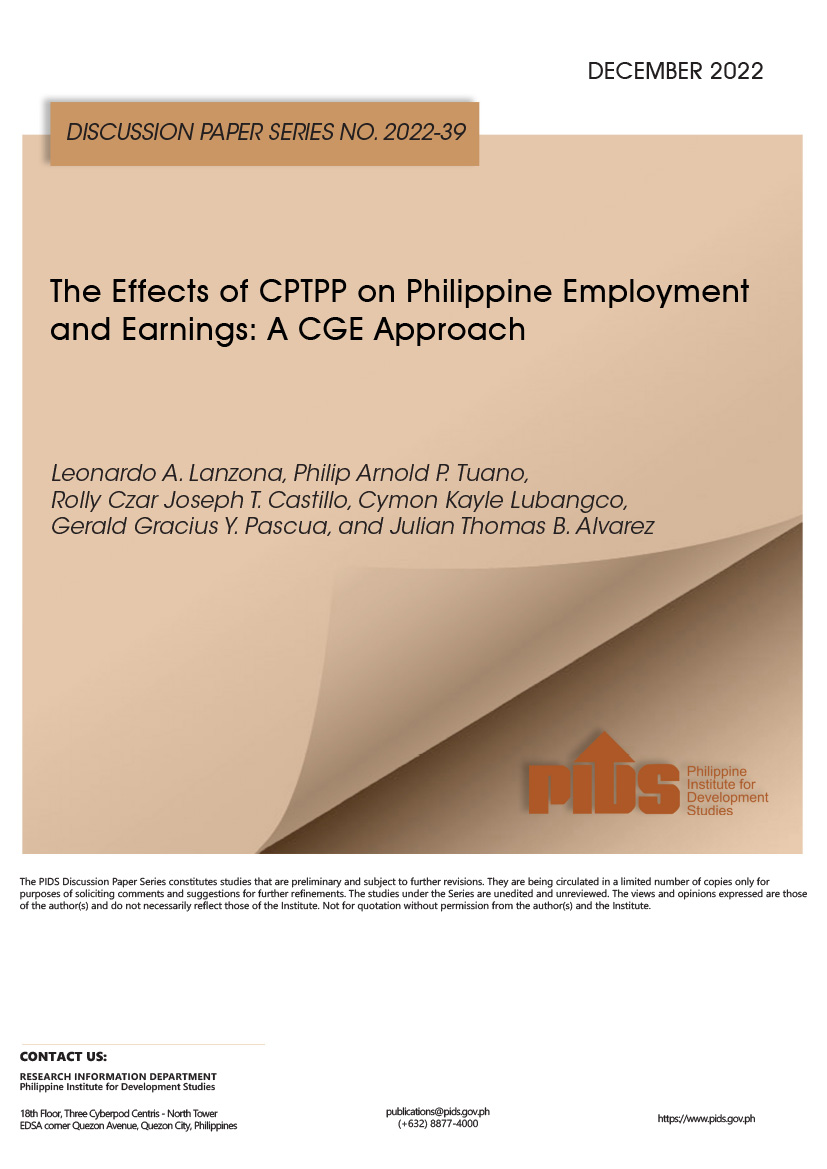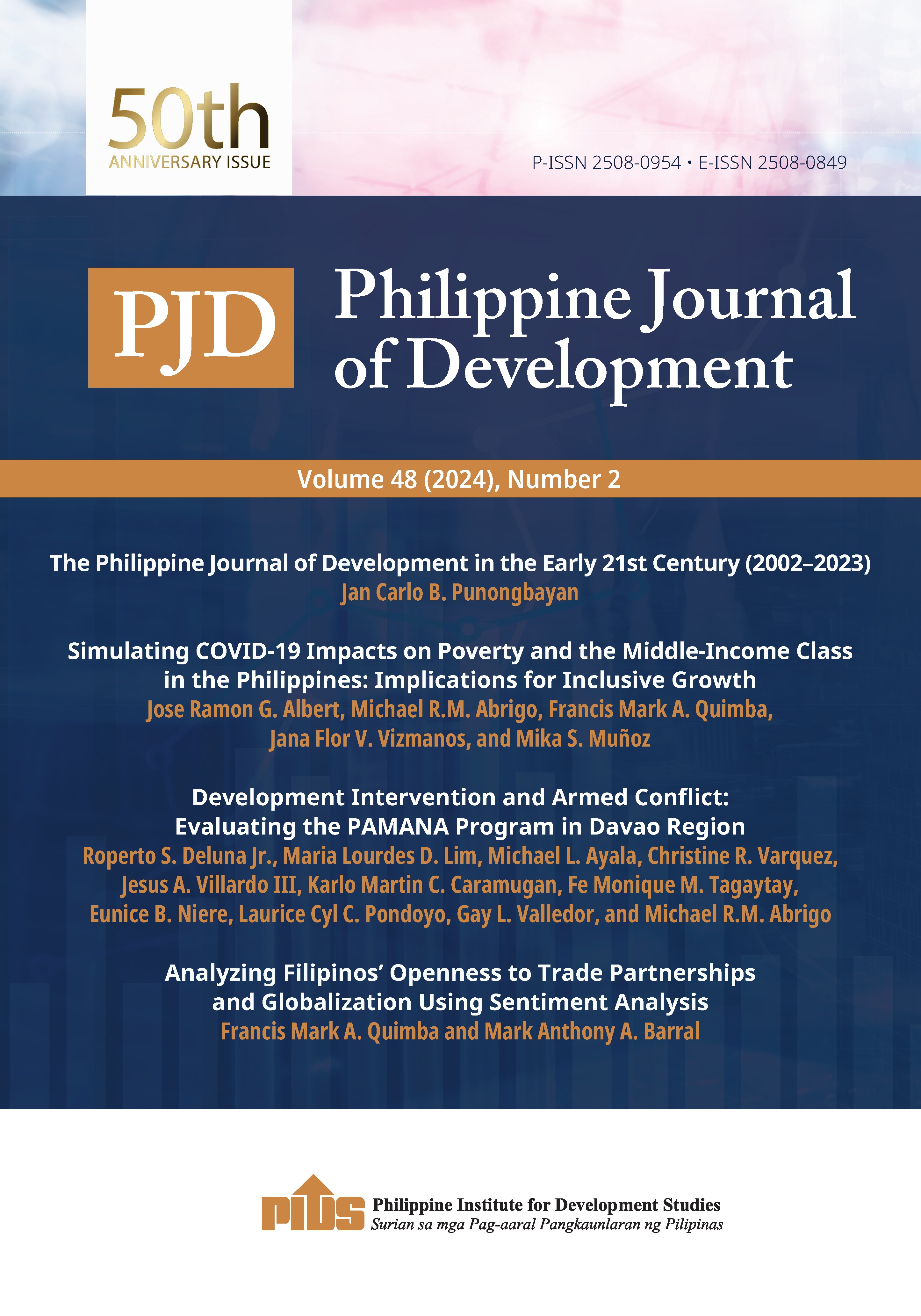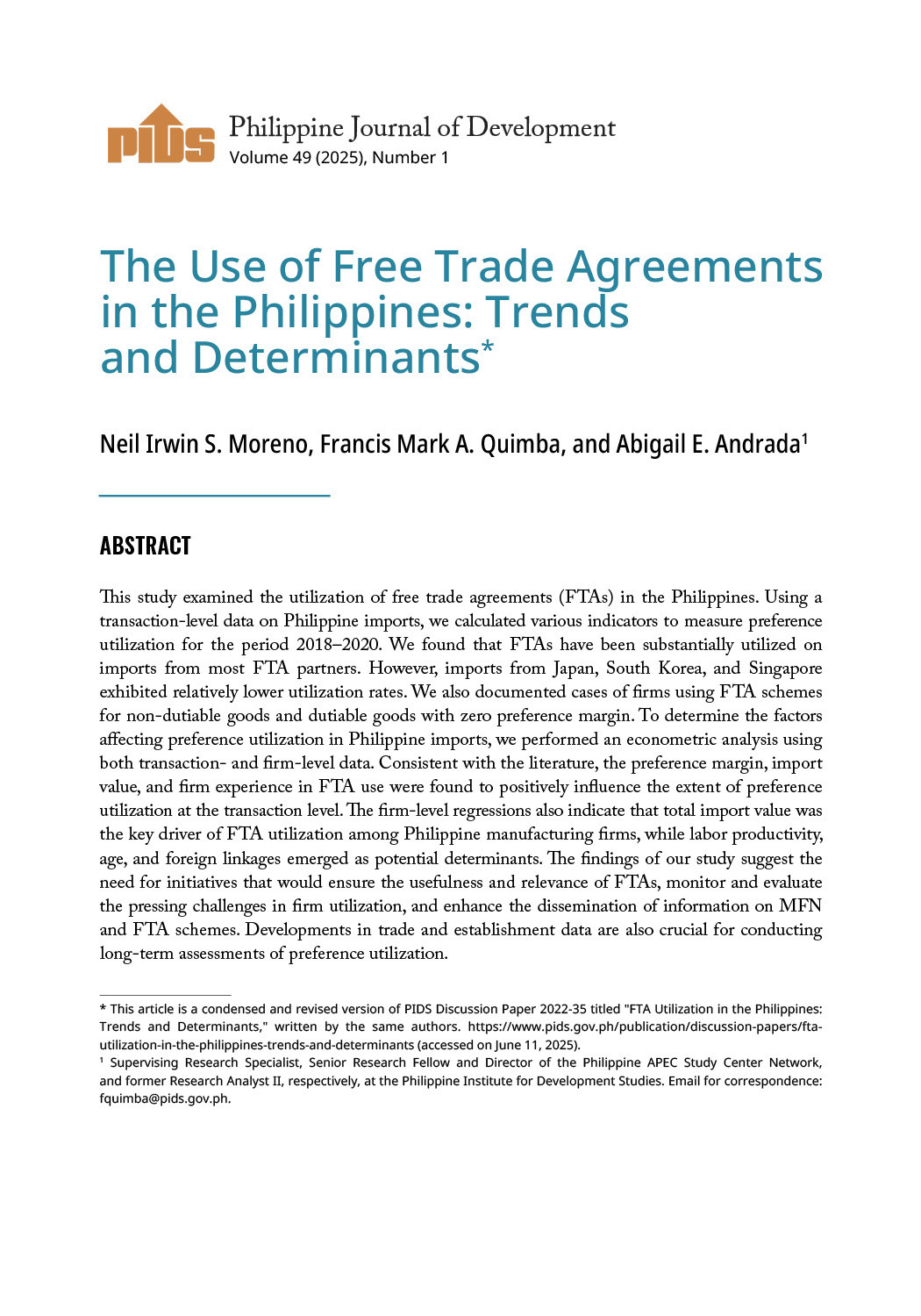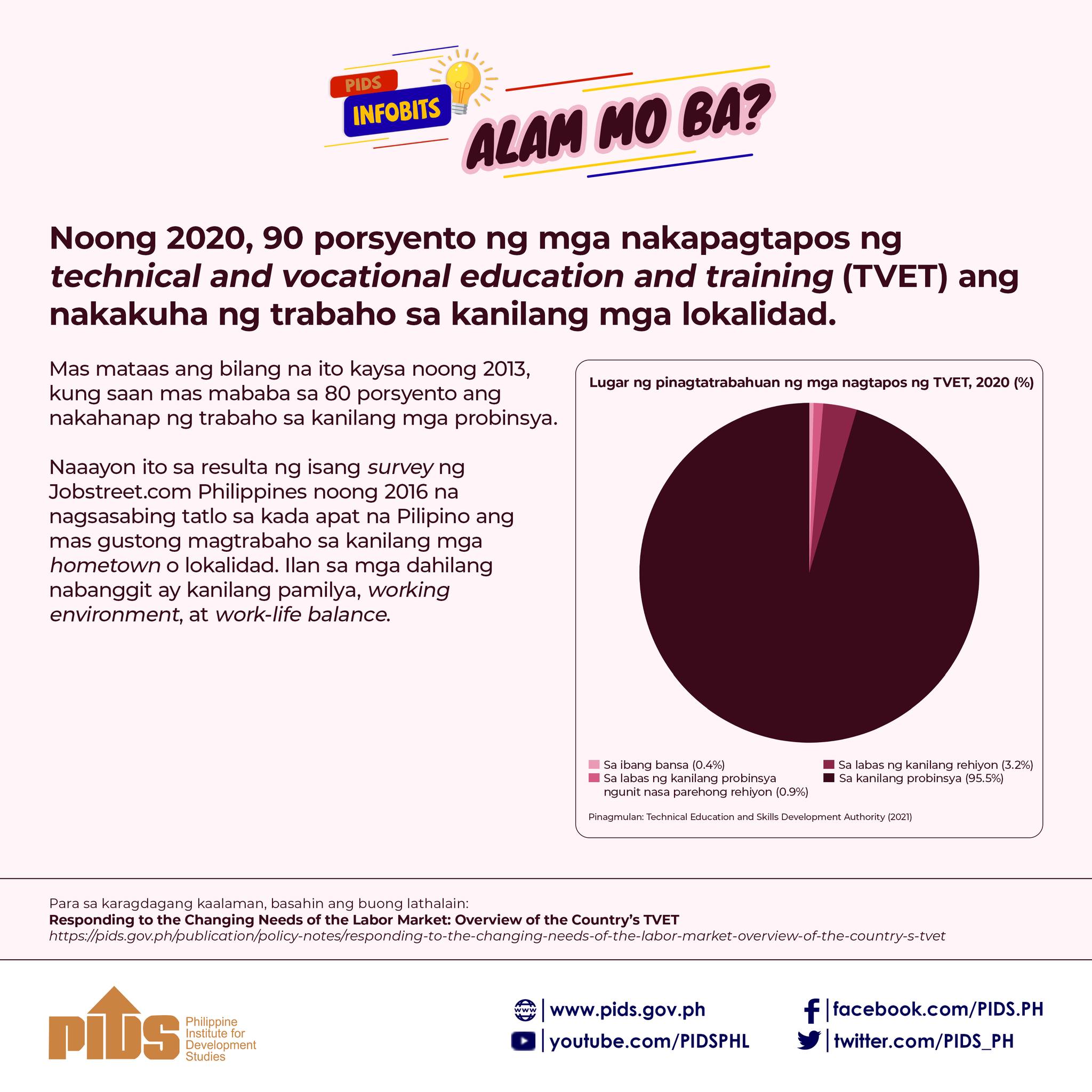This study aims to determine the potential impact of the Comprehensive and Progressive Agreement for Trans-Pacific Partnership (CPTPP) on the Philippines using a CGE-microsimulation model. From the standard Global Trade Analysis Project (GTAP) Database, the paper first considers the impact of CPTPPP on the Gross Domestic Product, sectoral exports and imports, and welfare in terms of incomes or consumption. After looking at the aggregate market-level reactions, the study then measures the adjustments at the worker level and determines how the exposure to trade with a particular region, such as the CPTPP, affected these adjustments. The results of the empirical analysis indicate the benefits and costs of joining the CPTPP. The benefits are: (a) shifts toward unskilled labor employment relative to other inputs; (b) increases in employment, both skilled and unskilled; (c) increases in returns for primary factors, particularly labor; and (d) increased employment in NCR, Central Luzon, but also in Western Mindanao and BARMM. The costs, however, are (a) lower GDP (as higher value-added industries decline); (b) greater trade deficits (due to accessibility of more imports); and (c) lower consumption surplus given more countries in the bloc but higher surplus if the bloc is limited to original members (trade diversion due to the participation). Participation in CPTPP is expected to result in losers and winners, which in this case, are labor-intensive industries. The losses, however, can be mitigated through government support by moving these industries toward the favored ones. Apart from taking advantage of the abundant unskilled labor resources in the country and reducing wage inequality between skilled and unskilled workers, participation in CPTPP also indicates export diversification.
Comments to this paper are welcome within 60 days from the date of posting. Email publications@pids.gov.ph.













